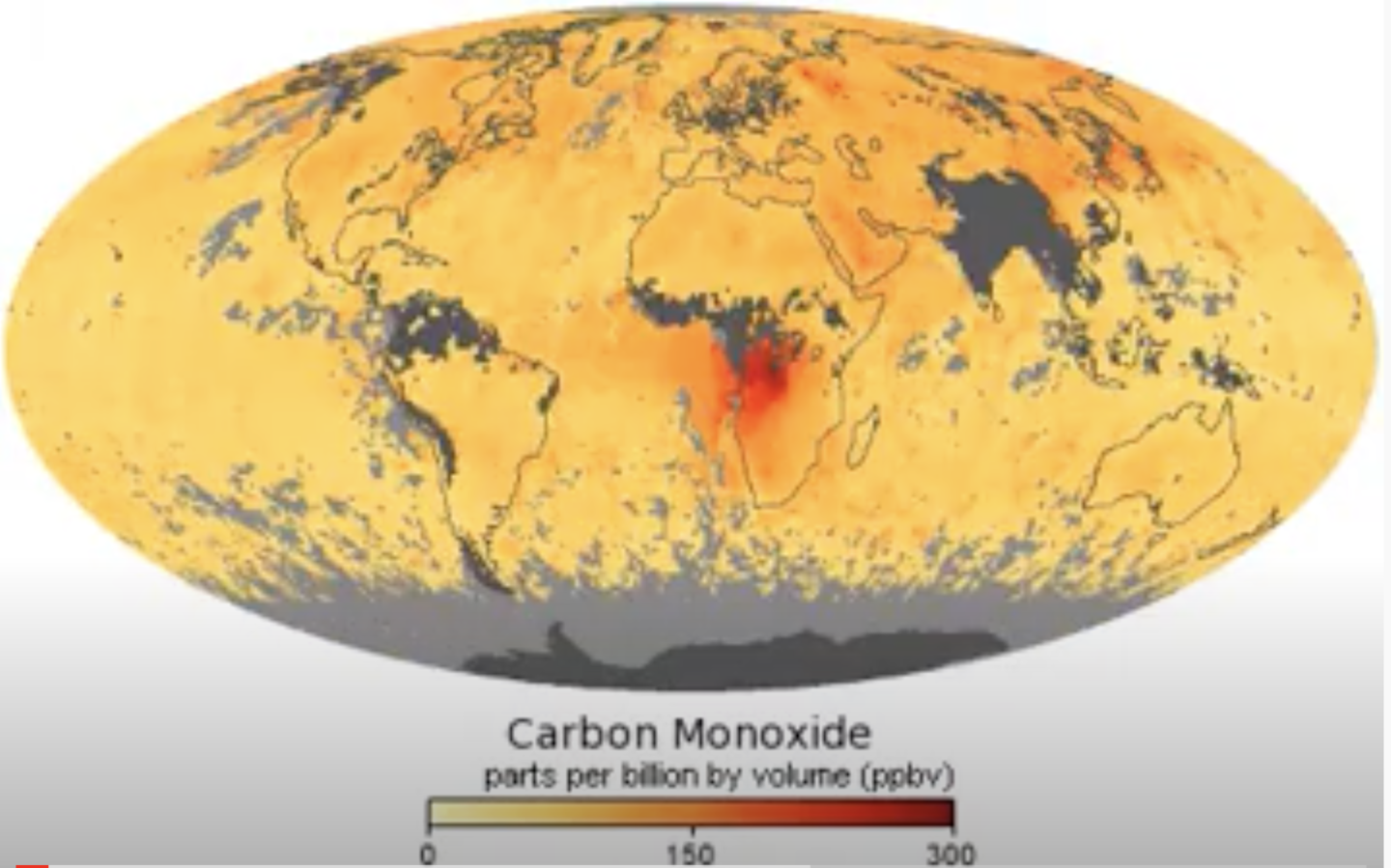
Colorless, odorless, and poisonous, carbon monoxide is one of the six major air pollutants regulated in the United States and in many other nations around the world. When carbon-based fuels—such as coal, wood, and oil—burn incompletely or inefficiently, they produce carbon monoxide. The gas is spread by winds and circulation patterns throughout the lower atmosphere. This video shows monthly averages of global concentrations of tropospheric carbon monoxide at an altitude of about 12,000 feet. Concentrations of carbon monoxide are expressed in parts per billion by volume (ppbv). Yellow areas have little or no carbon monoxide, while progressively higher concentrations are shown in orange and red. In different parts of the world and in different seasons, the amounts and sources of atmospheric carbon monoxide change. 2000–2017.
